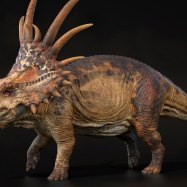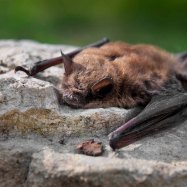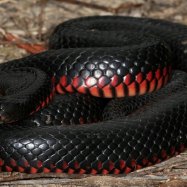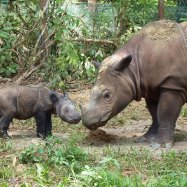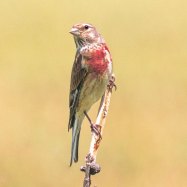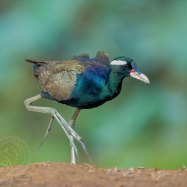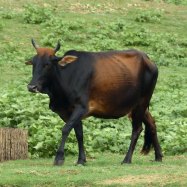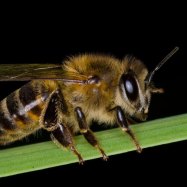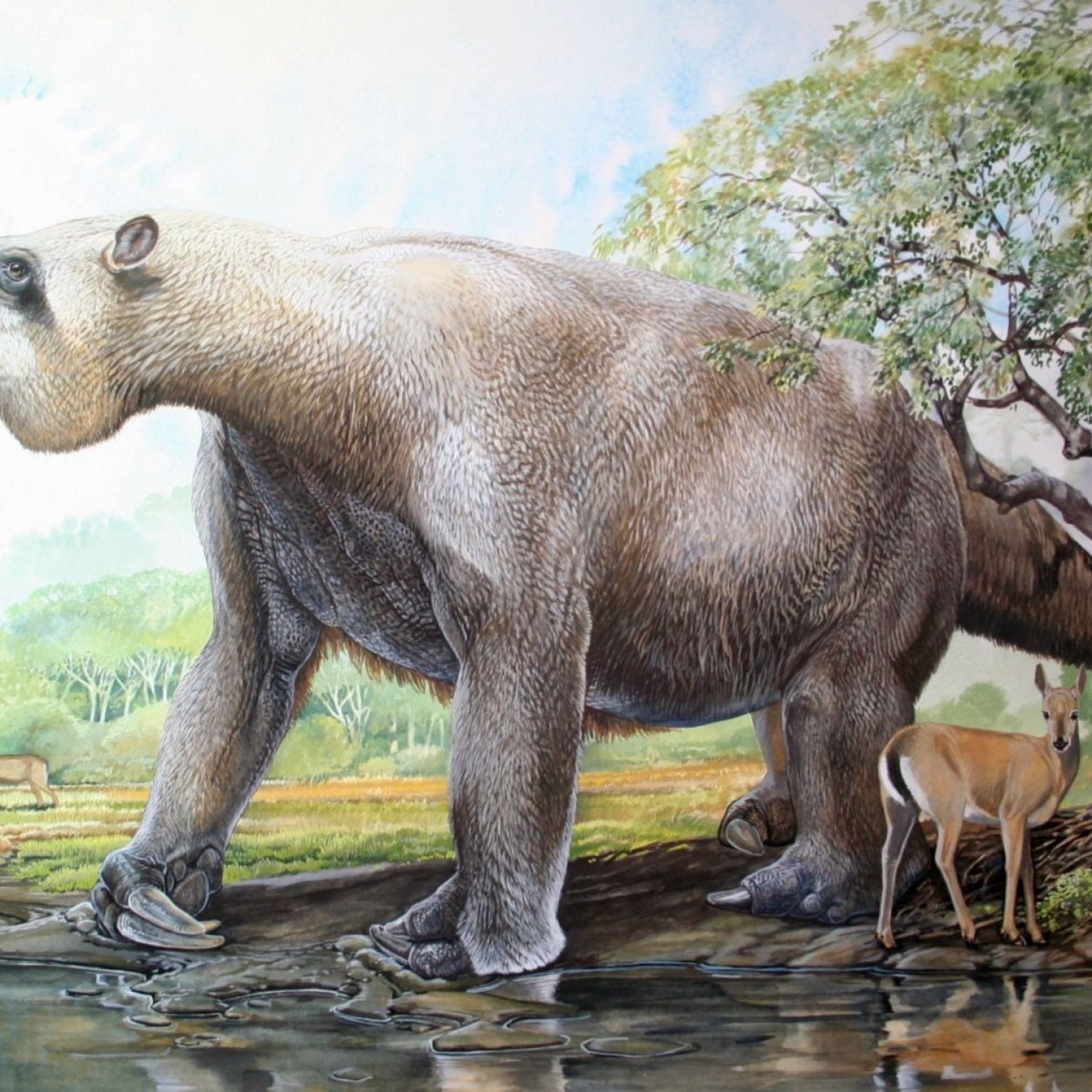
Megatherium
Up to 6 meters
Megatherium, also known as the Giant Sloth, was a massive mammal of the Megatheriidae family. Fossils of this animal, measuring up to 6 meters in length, have been found in South America. Its gigantic and robust body shape is a testament to its ancient existence, making it a fascinating creature for paleontologists and animal lovers alike.
Animal Details Summary:
Common Name: Megatherium
Kingdom: Animalia
Habitat: Open grasslands, forests, and swampy areas
The Incredible Megatherium: Uncovering the Mysteries of a Giant Sloth
Deep in the lush forests of South America, there once roamed a creature like no other. Towering over the landscape at a staggering 6 meters in length and weighing up to five tons, the Megatherium has captured the imagination of scientists and animal lovers alike. With its incredible size, distinct body shape, and unique coloration, this ancient herbivore has left behind a legacy that continues to fascinate us to this day. In this article, we will delve into the world of the Megatherium, uncovering its secrets and shedding light on its remarkable existence Megatherium.The Megatherium, also known by its scientific name Megatherium americanum, is a member of the Pilosa order, making it a distant relative of modern-day sloths. Its name, which translates to "great beast," is certainly fitting for this colossal creature. Its common name, Megatherium, is derived from the Greek words "mega" meaning large and "therion" meaning beast. This name accurately represents the awe-inspiring size and power of this prehistoric herbivore.
Belonging to the family Megatheriidae, the Megatherium is considered to be one of the largest land mammals to ever exist. Its classification in the animal kingdom is under Kingdom Animalia, Phylum Chordata, and Class Mammalia, highlighting its close evolutionary relationship with other mammals. However, it is important to note that the Megatherium is a distant cousin of today's mammals, with its ancestors dating back to the Pliocene epoch, around 5 million years ago.
The Megatherium's habitat included open grasslands, forests, and swampy areas, similar to those found in South America today. This massive mammal was a herbivore, meaning it only consumed plant material, primarily leaves and plants Monitor Lizard. Its strong jaws and large teeth were perfectly adapted for grinding tough vegetation, allowing it to break down and digest its food with ease. This feeding method was essential for the Megatherium to sustain its massive body mass, providing it with enough energy to support its massive size.
Speaking of size, the Megatherium's body shape was one of its most distinguishing features. Its elongated body was similar to that of a modern-day sloth, but enlarged and more robust. Its long legs allowed it to stand tall, supporting its colossal weight, and its powerful limbs were equipped with sharp claws for both digging and grasping. These claws could reach up to half a meter in length, making them some of the largest claws found in the animal kingdom. Its unique body shape enabled the Megatherium to navigate its surroundings with ease, giving it an advantage over other herbivores of its time.
Perhaps the most intriguing aspect of the Megatherium's appearance is its coloration. Fossilized remains of this extinct mammal indicate that it had a uniform brown color, which may have helped it blend in with its surroundings. However, it is worth noting that there is still some uncertainty surrounding its precise coloration. Without living specimens, it is challenging to determine the exact colors of this prehistoric creature.
The Megatherium was a resilient species, thriving in the diverse landscapes of South America. Its fossils have been found in several countries in South America, including Argentina, where the majority of its remains have been discovered. These fossils provide critical insights into the Megatherium's way of life, allowing scientists to piece together the puzzle of this enigmatic giant sloth.
One of the most notable characteristics of the Megatherium, aside from its size and body shape, was its unique locomotion. Unlike most mammals, this creature had a multi-jointed vertebral column, which gave it significant flexibility and allowed it to stand on its hind legs, similar to modern-day kangaroos. This adaptation was essential for its survival, as it gave the Megatherium an advantage in reaching for higher branches and escaping predators.
The Megatherium's journey through time came to an end around 11,000 years ago, during the end of the last ice age. While the exact causes of its extinction are still debated, scientists believe that the rapidly changing climate and landscape, along with the arrival of humans, may have played a significant role. Its once dominant presence in the South American landscape had come to an end, leaving behind only its impressive fossils as evidence of its existence.
Today, the Megatherium continues to fascinate us with its incredible size and unique adaptations. Its remains have been a source of wonder and discovery since their initial discovery in the 18th century. The study of the Megatherium has shed light on its evolutionary history and its role in shaping the ecosystems of ancient South America. Its legacy continues to inspire us to delve deeper into the mysteries of our planet's past.
In conclusion, the Megatherium is a testament to the wonders of evolution and the spectacular diversity of life on our planet. From its massive size and unique body shape to its striking brown coloration, the Megatherium is a creature that will forever capture our imagination and inspire awe and wonder. Although it may be long gone, its legacy lives on, reminding us of the incredible creatures that have roamed our planet before us.

Megatherium
Animal Details Megatherium - Scientific Name: Megatherium americanum
- Category: Animals M
- Scientific Name: Megatherium americanum
- Common Name: Megatherium
- Kingdom: Animalia
- Phylum: Chordata
- Class: Mammalia
- Order: Pilosa
- Family: Megatheriidae
- Habitat: Open grasslands, forests, and swampy areas
- Feeding Method: Herbivore
- Geographical Distribution: South America
- Country of Origin: Argentina
- Location: Fossils found in several countries in South America
- Animal Coloration: Brown
- Body Shape: Gigantic and robust
- Length: Up to 6 meters
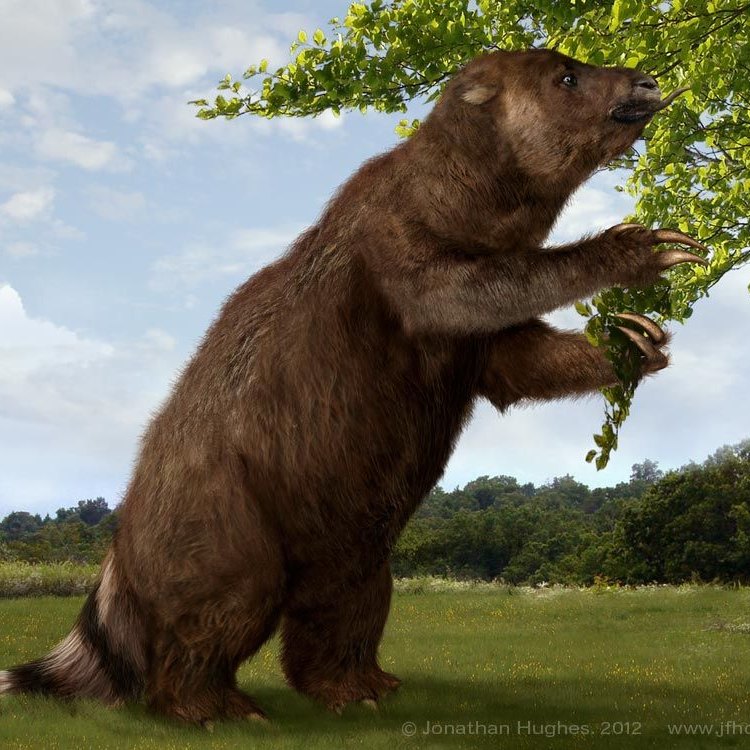
Megatherium
- Adult Size: Similar to an elephant
- Average Lifespan: 20-30 years
- Reproduction: Sexual
- Reproductive Behavior: Unknown
- Sound or Call: Unknown
- Migration Pattern: Non-migratory
- Social Groups: Unknown
- Behavior: Slow-moving and solitary
- Threats: Hunting by early humans
- Conservation Status: Extinct
- Impact on Ecosystem: Large browsing herbivore
- Human Use: None
- Distinctive Features: Long, curved claws and massive size
- Interesting Facts: One of the largest land mammals to have ever existed
- Predator: None
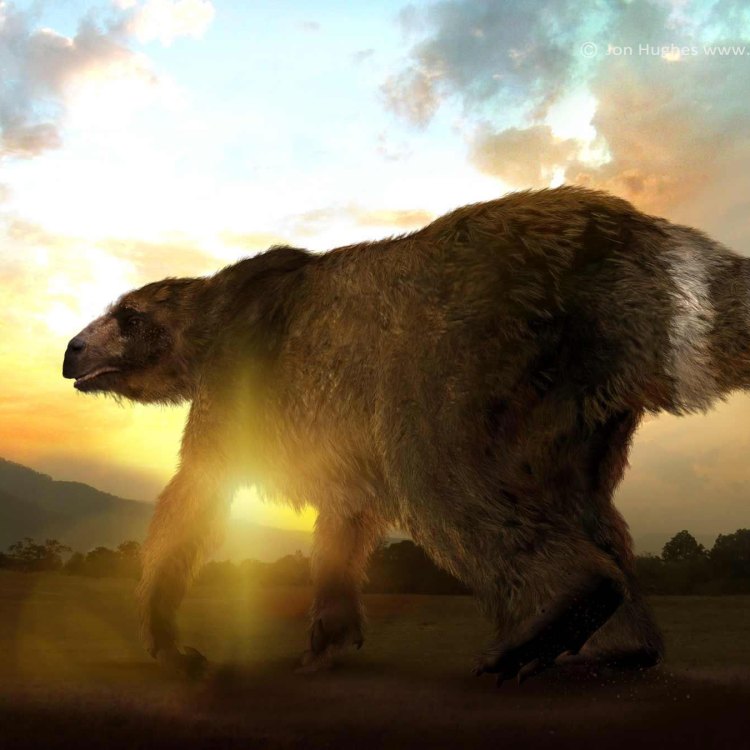
Megatherium americanum
The Mighty Megatherium: A Giant of the Past
In the vast and diverse world of prehistoric animals, one creature stands out as a true giant among giants. The Megatherium, also known as the "great beast," was one of the largest land mammals to have ever existed, and its unique features and behaviors continue to fascinate and intrigue scientists and enthusiasts alike.Similar to an elephant in size, the Megatherium roamed South America during the Pleistocene Epoch, between 2.6 million to 12,000 years ago PeaceOfAnimals.Com. With an average lifespan of 20-30 years, this gentle giant was a slow-moving and solitary creature, standing at an impressive 18 feet tall and weighing up to 6 tons.
But what made the Megatherium truly stand out were its distinctive features. Its most notable characteristic was its long, curved claws, which could reach up to a foot in length. These claws were used mainly for digging and gathering food, as the Megatherium was a large browsing herbivore, feeding on leaves, fruits, and other vegetation. In fact, it is believed that these massive claws were used to pull down tree branches to reach leaves that other herbivores couldn't. This behavior played a crucial role in the Megatherium's impact on the ecosystem.
As a non-migratory species, the Megatherium was believed to have lived in an area with abundant plant life. Its slow movement reduced the need for long-distance travel, allowing it to stay in one place and feed on a wide range of plants. However, its size and large appetite also meant that it had a significant impact on the environment Mauzer. The Megatherium's browsing behavior helped maintain vegetation growth, and its massive size allowed it to ingest large amounts of food, dispersing seeds throughout its habitat and contributing to plant diversity.
Despite its massive size and the role it played in its ecosystem, the Megatherium had very few predators. Its massive body and sharp claws were enough of a deterrent to most predators, and there is no evidence of any species preying on the Megatherium. However, its only threat came from humans.
As early humans began to colonize South America, they hunted the Megatherium, along with other large animals, for food and resources. This hunting, combined with changes in climate and habitat loss, contributed to the Megatherium's extinction around 10,000 years ago.
But what was the Megatherium's reproductive behavior and social groups? Unfortunately, we don't have much information on this aspect of the Megatherium's life. Since it was a solitary creature, it is believed that it did not form social groups and may have only interacted during mating season. As for its reproductive behavior, it is assumed to be sexual, similar to most mammals, but no concrete evidence has been found to confirm this.
Another intriguing mystery surrounding the Megatherium is its sound or call. There has been no fossil evidence of vocal cords or any vocalization structures, leaving scientists to speculate on what sounds it may have made. Some believe that, due to its large size, it may have produced low-frequency vocalizations similar to elephants, while others suggest it may have been a silent creature.
Despite having gone extinct thousands of years ago, the Megatherium's legacy continues to live on. Its fossils, which have been discovered in various parts of South America, have given us a glimpse into the life of this remarkable creature. Its discovery and study have also played a significant role in our understanding of the Earth's past and the vast diversity of prehistoric life.
As for human use, the Megatherium had none, as it went extinct long before humans developed the technology to make use of its massive body. However, as mentioned earlier, its impact on the ecosystem was significant, and its extinction had a ripple effect on the environment. We can only imagine what the world would be like if the Megatherium were still alive today.
In conclusion, the Megatherium was a true titan of the past, known for its massive size, unique features, and impact on its environment. Despite its extinction, its legacy continues to thrive, and its fascinating story is a testament to the impressive diversity of terrestrial animals in prehistoric times. As we continue to discover more about the Megatherium and other extinct creatures, we gain a deeper understanding of our planet's history and the incredible creatures that once roamed it.
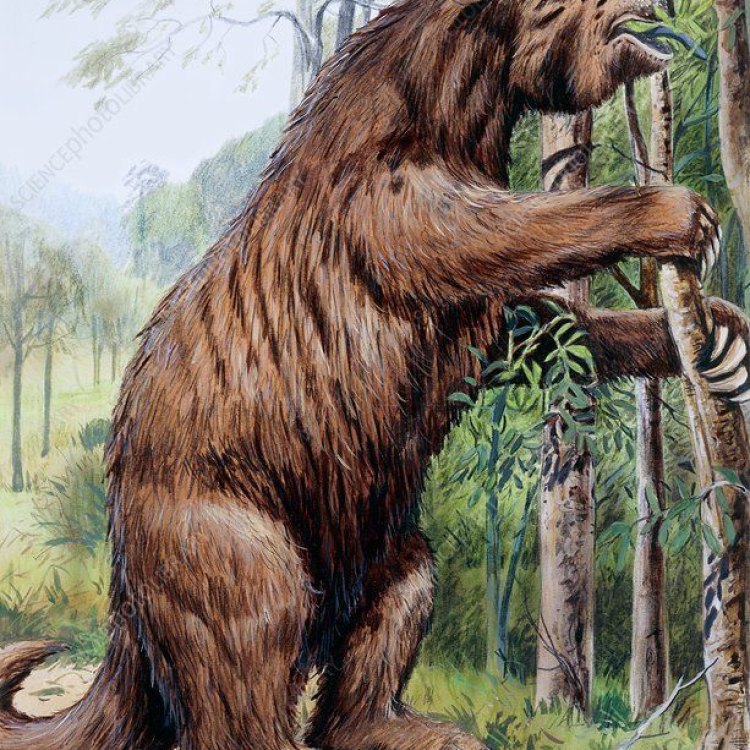
The Incredible Megatherium: Uncovering the Mysteries of a Giant Sloth
Disclaimer: The content provided is for informational purposes only. We cannot guarantee the accuracy of the information on this page 100%. All information provided here may change without prior notice.

